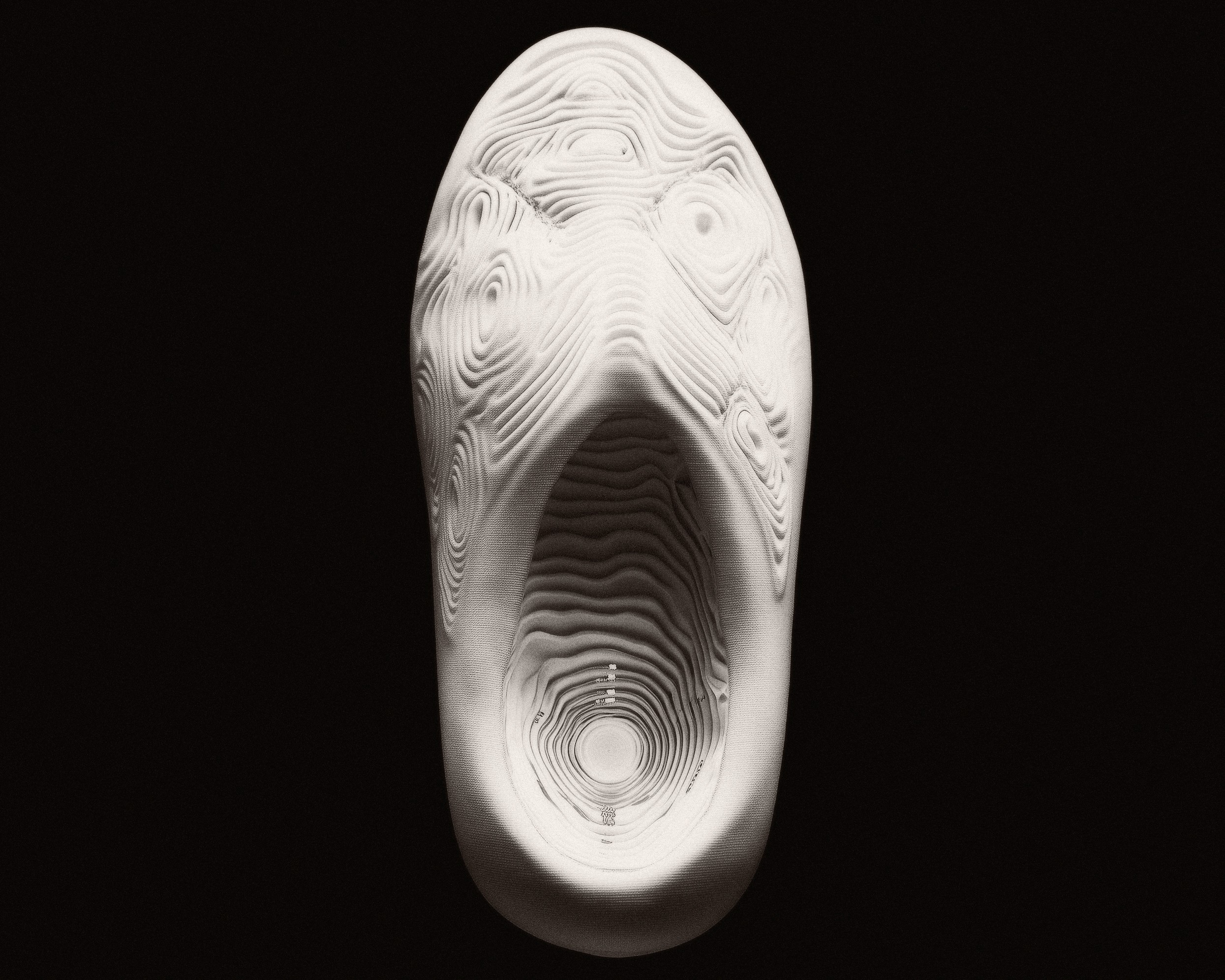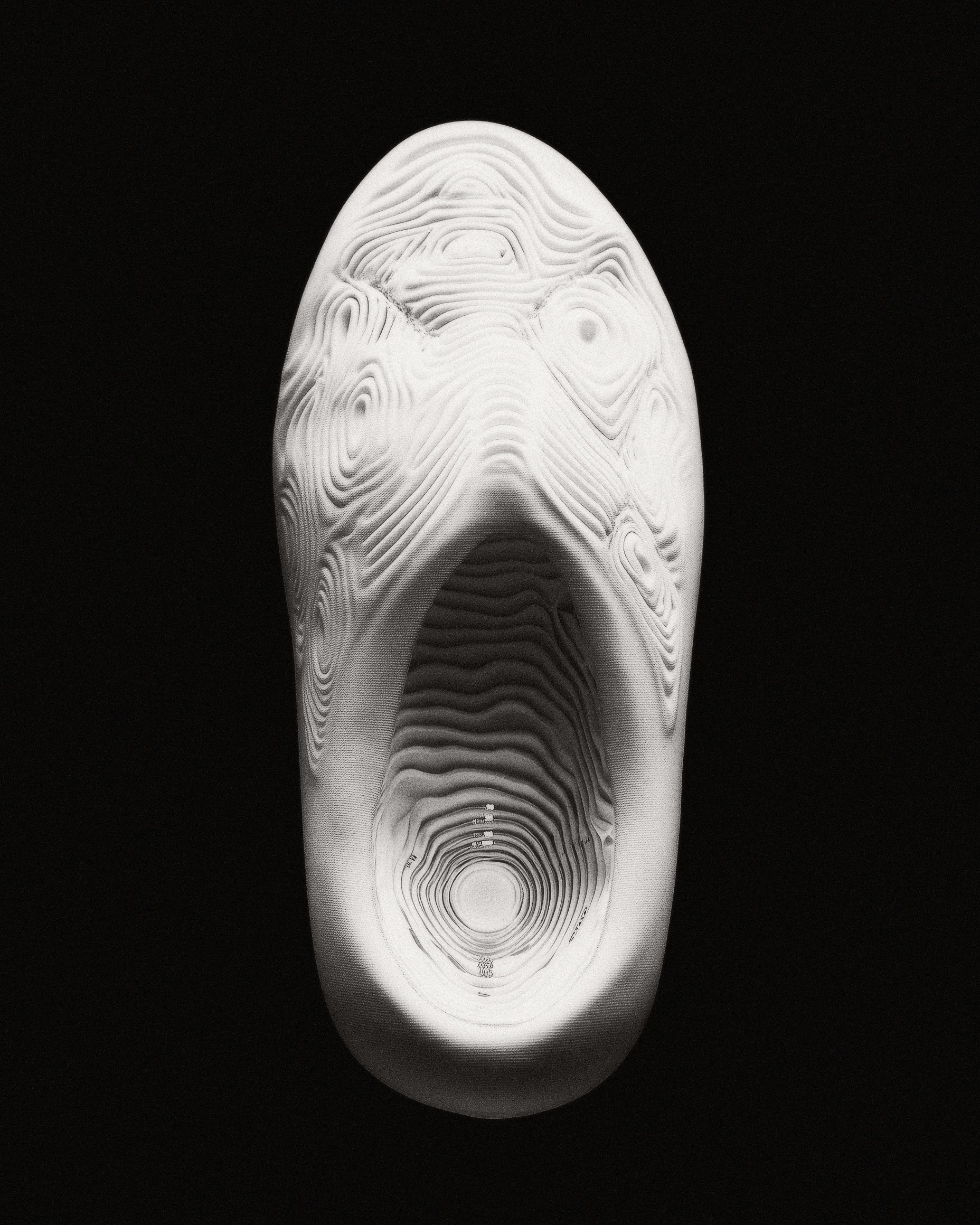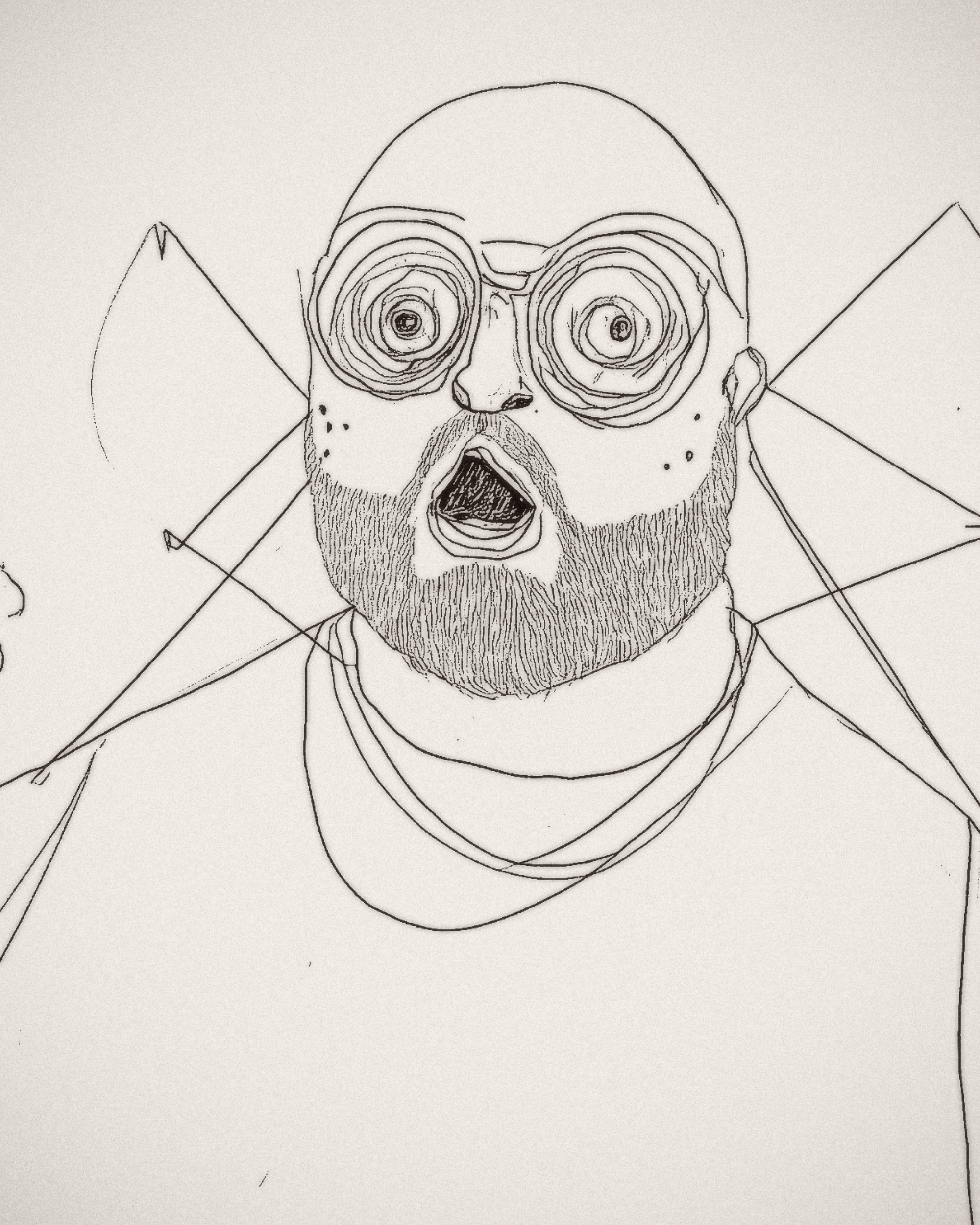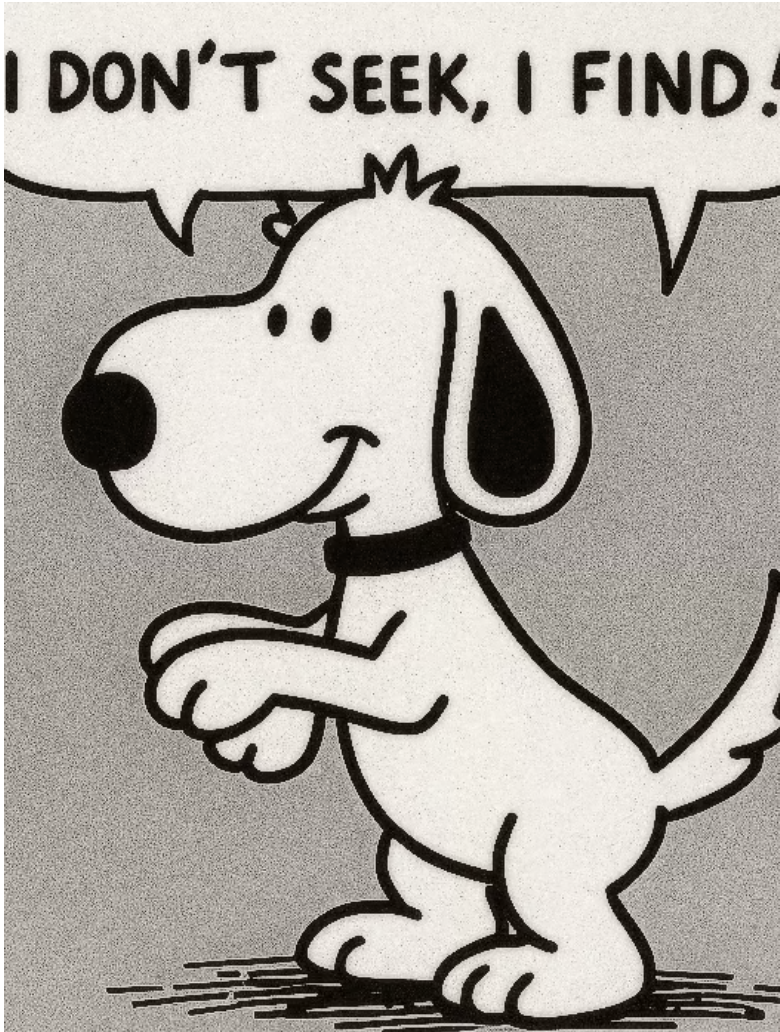Haegg Haegg Group
Contact
Infinite Creative Fields
“In a field of infinite outputs, taste, vision, and restraint becomes the rarest code.”
By: Jacob Hägg
Dispatches

Rethinking Creativity in the Age of AI
There’s a persistent belief that AI can’t be creative. That it simply shuffles existing patterns, copying from the past without understanding, depth, or originality. But this is a fundamental misreading—not just of the technology, but of creativity itself. AI is not a filter or a mimic. It is a generative engine operating across vast dimensions of language, style, form, and function. It doesn’t imagine in the way humans do—but it produces, endlessly. The scale and speed of its ideation are unlike anything we’ve ever encountered.
The truth is, AI doesn’t suffer from a lack of imagination. It suffers from an overabundance of it. It can produce thousands of outputs before we’ve had our morning coffee. What it lacks is not novelty, but discernment. It generates in every direction simultaneously, indifferent to context, emotion, or outcome. The limitation is not in the machine’s ability to create, but in our ability to interpret, filter, and refine what it gives us.
The Shift From Scarcity to Overload
For most of history, the creative struggle was about scarcity—scarcity of tools, of time, of access. But in the age of AI, we face the opposite problem: we are overwhelmed by abundance. Today, everyone has access to the same technologies, the same models, the same interfaces. The field is wide open. You can generate thousands of visual identities, product ideas, storylines, or moodboards in minutes. But abundance, unchecked, leads to chaos. What was once a challenge of making now becomes a challenge of knowing when to stop.
This shift changes everything. It turns the creative act from a matter of production into a matter of perception. The most valuable skill is no longer the ability to create more, but the ability to see clearly through the fog of infinite options. Creativity becomes less about input and more about recognition. Less about expression, more about restraint.
Prompting as a System of Awareness
Prompting, in this new era, is not about issuing commands to a machine. It’s about constructing a cognitive interface—an architecture of perception that allows ideas to emerge with coherence and direction. A good prompt is not simply a line of text. It’s a designed system of intention. And like any system, it requires structure, constraint, and clarity.
At Intelligence Matters, we developed the Prompt Cube to help frame this process. It’s a multidimensional tool, based on six foundational elements: Mood, Format, Constraint, Style, Audience, and Archetype. Each face of the cube represents a variable, a perspective, a limitation—and every time you rotate one, you shift the relationship between the others. It’s a physical metaphor for mental clarity. A way to see the architecture of an idea before it takes shape.
This isn’t a gimmick. It’s a philosophy. Prompting well means tuning a system, not typing a wish. It means understanding how intention shapes output, and how subtle shifts—3%, as Virgil Abloh once said—can lead to profound transformations. It’s about feeling the alignment before the result arrives.
Infinite Tools, Rare Masters
To understand what’s really happening in creative AI, imagine three parallel metaphors. First, the synthesizer: a machine of limitless sound, with infinite frequencies at your fingertips. But without taste, without ears trained to feel harmony, the result is just noise. The second: a starship control deck. Every destination is possible. Every tool is available. But without a mission, you are simply drifting in space. And third: the blank canvas. The most minimal tool—just a page and a pencil—but within it, every world can be born. Only some know how to leave space, how to choose silence over clutter, how to draw just enough.
These aren’t just analogies—they’re real frameworks for thinking. Most people, when handed infinite possibility, default to what they already know. The familiar. The safe. But those who truly understand the medium recognize that creativity doesn’t come from having every option. It comes from knowing which ones to eliminate.
Mastery today means being able to navigate the infinite field of AI with clarity. It’s knowing when to explore, when to compress, when to stop. It’s the ability to move from idea to execution not by adding more, but by editing with care.
The Final Layer: The Discipline to Stop
The more advanced the tools become, the more valuable creative discipline becomes. In a world where anything is possible, the question is no longer “What can you make?” It’s “What are you willing to leave out?” True prompting is not about generation. It’s about refinement. It’s about the invisible architecture behind the visible artifact. It’s about knowing how to arrive at a final form—and having the courage to say, “This is complete.”
AI does not democratize quality. It democratizes output. And with that output comes a test: who can lead with vision? Who can bring intentionality into the storm of infinite signals?
Final Transmission
At Intelligence Matters, we don’t just generate. We direct. We tune. We choreograph systems of creativity with discipline and clarity. If you’re a brand, designer, or founder looking to explore the infinite field of AI—but want to do it with elegance, with precision, with an eye toward legacy
Other Dispatches

Infinite Creative Fields
This dispatch examines how creative intelligence operates through architectural frameworks rather than linear commands. It maps the cognitive structures that enable visionaries to navigate infinite possibility spaces through deliberate constraint...
infinite creative fields

The Human-AI Canvas
This dispatch investigates the evolving relationship between human creativity and artificial intelligence. Rather than positioning them as adversaries, it explores the fertile territory where human intuition and computational precision can amplify each other's capabilities...
The human-ai canvas

When Art Rewires Reality
This dispatch draws unexpected connections between Cubism's multi-perspective approach and The Matrix's reality-questioning philosophy. It examines how revolutionary art movements and paradigm-shifting films share a common foundation...
when art rewires reality
Contact Us
Drop us a line
Haegg Haegg Group
Contact
Infinite Creative Fields
“In a field of infinite outputs, taste, vision, and restraint becomes the rarest code.”
By: Jacob Hägg
Dispatches

Rethinking Creativity in the Age of AI
There’s a persistent belief that AI can’t be creative. That it simply shuffles existing patterns, copying from the past without understanding, depth, or originality. But this is a fundamental misreading—not just of the technology, but of creativity itself. AI is not a filter or a mimic. It is a generative engine operating across vast dimensions of language, style, form, and function. It doesn’t imagine in the way humans do—but it produces, endlessly. The scale and speed of its ideation are unlike anything we’ve ever encountered.
The truth is, AI doesn’t suffer from a lack of imagination. It suffers from an overabundance of it. It can produce thousands of outputs before we’ve had our morning coffee. What it lacks is not novelty, but discernment. It generates in every direction simultaneously, indifferent to context, emotion, or outcome. The limitation is not in the machine’s ability to create, but in our ability to interpret, filter, and refine what it gives us.
The Shift From Scarcity to Overload
For most of history, the creative struggle was about scarcity—scarcity of tools, of time, of access. But in the age of AI, we face the opposite problem: we are overwhelmed by abundance. Today, everyone has access to the same technologies, the same models, the same interfaces. The field is wide open. You can generate thousands of visual identities, product ideas, storylines, or moodboards in minutes. But abundance, unchecked, leads to chaos. What was once a challenge of making now becomes a challenge of knowing when to stop.
This shift changes everything. It turns the creative act from a matter of production into a matter of perception. The most valuable skill is no longer the ability to create more, but the ability to see clearly through the fog of infinite options. Creativity becomes less about input and more about recognition. Less about expression, more about restraint.
Prompting as a System of Awareness
Prompting, in this new era, is not about issuing commands to a machine. It’s about constructing a cognitive interface—an architecture of perception that allows ideas to emerge with coherence and direction. A good prompt is not simply a line of text. It’s a designed system of intention. And like any system, it requires structure, constraint, and clarity.
At Intelligence Matters, we developed the Prompt Cube to help frame this process. It’s a multidimensional tool, based on six foundational elements: Mood, Format, Constraint, Style, Audience, and Archetype. Each face of the cube represents a variable, a perspective, a limitation—and every time you rotate one, you shift the relationship between the others. It’s a physical metaphor for mental clarity. A way to see the architecture of an idea before it takes shape.
This isn’t a gimmick. It’s a philosophy. Prompting well means tuning a system, not typing a wish. It means understanding how intention shapes output, and how subtle shifts—3%, as Virgil Abloh once said—can lead to profound transformations. It’s about feeling the alignment before the result arrives.
Infinite Tools, Rare Masters
To understand what’s really happening in creative AI, imagine three parallel metaphors. First, the synthesizer: a machine of limitless sound, with infinite frequencies at your fingertips. But without taste, without ears trained to feel harmony, the result is just noise. The second: a starship control deck. Every destination is possible. Every tool is available. But without a mission, you are simply drifting in space. And third: the blank canvas. The most minimal tool—just a page and a pencil—but within it, every world can be born. Only some know how to leave space, how to choose silence over clutter, how to draw just enough.
These aren’t just analogies—they’re real frameworks for thinking. Most people, when handed infinite possibility, default to what they already know. The familiar. The safe. But those who truly understand the medium recognize that creativity doesn’t come from having every option. It comes from knowing which ones to eliminate.
Mastery today means being able to navigate the infinite field of AI with clarity. It’s knowing when to explore, when to compress, when to stop. It’s the ability to move from idea to execution not by adding more, but by editing with care.
The Final Layer: The Discipline to Stop
The more advanced the tools become, the more valuable creative discipline becomes. In a world where anything is possible, the question is no longer “What can you make?” It’s “What are you willing to leave out?” True prompting is not about generation. It’s about refinement. It’s about the invisible architecture behind the visible artifact. It’s about knowing how to arrive at a final form—and having the courage to say, “This is complete.”
AI does not democratize quality. It democratizes output. And with that output comes a test: who can lead with vision? Who can bring intentionality into the storm of infinite signals?
Final Transmission
At Intelligence Matters, we don’t just generate. We direct. We tune. We choreograph systems of creativity with discipline and clarity. If you’re a brand, designer, or founder looking to explore the infinite field of AI—but want to do it with elegance, with precision, with an eye toward legacy
Other Dispatches

Infinite Creative Fields
This dispatch examines how creative intelligence operates through architectural frameworks rather than linear commands. It maps the cognitive structures that enable visionaries to navigate infinite possibility spaces through deliberate constraint...
infinite creative fields

The Human-AI Canvas
This dispatch investigates the evolving relationship between human creativity and artificial intelligence. Rather than positioning them as adversaries, it explores the fertile territory where human intuition and computational precision can amplify each other's capabilities...
The human-ai canvas

When Art Rewires Reality
This dispatch draws unexpected connections between Cubism's multi-perspective approach and The Matrix's reality-questioning philosophy. It examines how revolutionary art movements and paradigm-shifting films share a common foundation...
when art rewires reality
Contact Us
Drop us a line